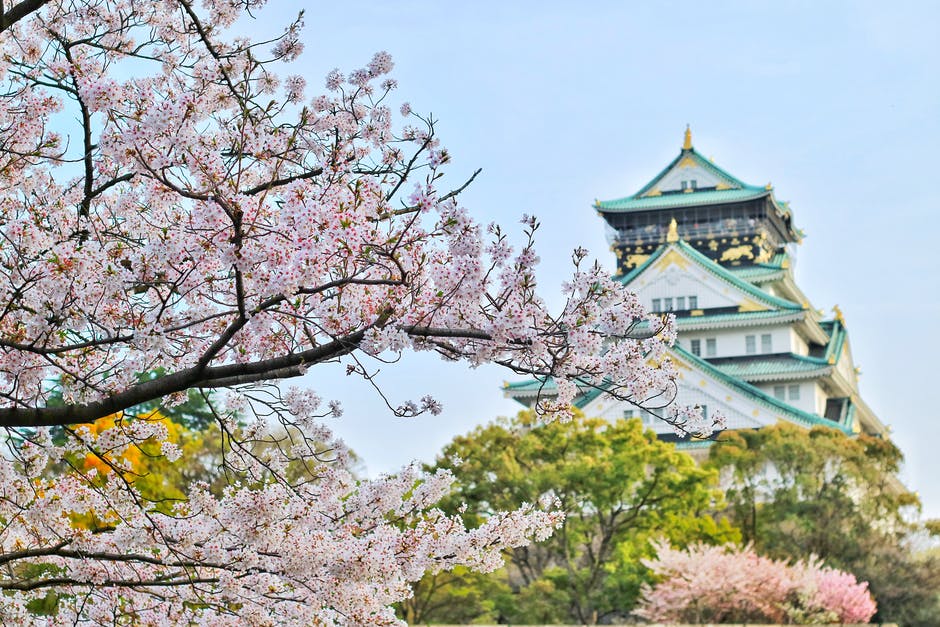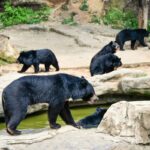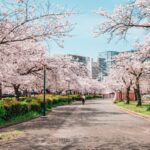
Do you want to know the best way to explore Japan?
Japan is a beautiful country with a close connection to its natural beauty. Landscapes and nature play a crucial role in Japanese culture. Animals native to Japan, such as foxes and bears, symbolize Japan’s identity.
Japan is also well-known for its Sakura trees which have become an icon of Japan’s beauty. However, this isn’t all Japan has to offer. Japan is overflowing with natural wonders that can inspire you to be one with nature.
If you love outdoor activities, here are the best places to appreciate nature in Japan. Read on to discover Japan’s natural landscapes, and don’t miss out when you visit!
1. Mount Fuji
Mount Fuji is undoubtedly one of the most iconic of Japan’s landscapes. Mount Fuji is the tallest peak in Japan, standing at over 12,000 feet. Mount Fuji is actually a volcano, but the last signs of volcanic activity were over 100,000 years ago.
This picturesque snow-capped volcano is only 60 miles from Tokyo, and you can see it from within the city. However, if you want to immerse yourself in the sight of Mount Fuji, you need to go to Chureito Pagoda. This Pagoda, located in Fujiyoshida, sits on a mountain opposite Mount Fuji.
It’s a beautiful sight in itself and is the best place to take pictures of Japan’s most famous mountain. However, if you want a closer look, you can travel to Lake Kawaguchi or Lake Yamanaka.
If you’re up for a challenging hike, consider climbing Mount Fuji. Be sure to pack warm clothes for when you reach the top.
2. Naruto Whirlpools
Are you looking to test your bravery on water? See the clash of tides between the Pacific Ocean and the Seto Inland Sea. Together, they created a natural phenomenon that earned the name the Naruto Whirlpools.
If you want the full experience, be sure to take a boat and get up close. The Uzushio Kizen and Uzushio Kankosen offer sightseeing tours to see the whirlpools. This boat ride will show you the real force of the Naruto Whirlpools, but you can also watch from the safety of the Naruto Bridge.
3. Hell Valley, Jigokudani
Don’t mistake Hell Valley for Japan’s monkey park. Jigokudani takes you down a volcanic crater, which coined the name Hell Valley. This smoldering landscape shows you nature’s dark side, adorned with bubbling mud and geysers.
Despite the name, Jigokudani is one of the most popular hot springs in Japan. The resort, Noboribetsu, sits at the side of the crater. Take off a load and let the water melt away your troubles for a day or overnight!
4. Akiyoshido Cave
If you want to explore one of the more hidden wonders of Japan, go to Akiyoshido Cave. Akiyoshido Cave, also known as Akiyoshi-dō, is an underground cavern that spans over six miles. However, only 1 kilometer is accessible by the public, but there’s plenty to explore.
5. Mount Aso
After you’ve explored Akiyoshido Cave and Mount Fuji, consider visiting Mount Aso. Mount Aso sits on Kyushu Island with its siblings, Mount Eboshi, Mount Neko, Mount Naka, and Mount Kishima. Mount Naka is notorious for its active caldera, which blows out sulfurous smoke on a regular basis.
Don’t forget to stop by the Mount Aso Museum. They feature live footage taken from inside the volcano. Take a break from the heat, hike to the Kusasenrie Praire, and enjoy the fresh air.
6. Nachi Waterfall
Waterfalls are iconic in Japanese art, and one of the main inspirations for these was the Nachi Waterfall. Nachi Waterfall sits at a little over 400 feet and is the country’s tallest single drop fall. For centuries, the waterfall homed religious shrines and worship.
Many Japanese locals still see the Nachi Waterfall as a place of pilgrimage. The Nachi Taisha Shrine stands before the waterfall for all who make the journey. If you’re looking to visit the Nachi Waterfall, make sure to plan to stay the night.
The nearest towns are at least a four-hour drive away. You can always stay at the Guesthouse Fukuroku or the Onsenminshuku Kosakaya.
7. Tottori Sand Dunes
Japan may seem like the last place to see desert landscapes, but it’s home to the Tottori Sand Dunes. These shifting sands cover over 18 square miles on Japan’s coast. The dune formation is always changing, depending on the direction of the wind.
If you visit the Tottori Sand Dunes, you must try the ski-lift-style cable ride. This ride will last about five minutes but will give you an amazing view of this desert spectacle.
8. Yakushima Island
Are you looking to fully unplug from the internet and appreciate nature in Japan? There’s no better place to do it than on Yakushima Island. If you’ve watched Princess Mononoke, you’ll be thrilled to learn that this place inspired the Ghibli film.
Wear your best boots and take a hike through Arakawa Trail. Yakushima is home to Yakasugi, which are thousand-year-old Japanese cedar trees. The oldest tree, which inspired Princess Mononoke, is called Jomon Sugi.
This tree stands over 82 feet and has a 16-foot diameter trunk. The island also homes Yaku monkeys and Yaku Shika, a type of deer that visits the villages at night.
9. Takachiho Gorge
If you love ferry rides, you’re sure to enjoy cruising through the Takachiho Gorge. This natural scenery looks straight out of a fairytale. The Takachiho Gorge is a narrow channel between 328-foot basalt rock walls.
The cliffs, adorned with overgrown trees and moss, lead to the Minainotaki waterfall. The boat ride takes a little over a half hour and can only fit about three people. This is the perfect romantic boat ride for couples visiting Takachiho Gorge.
10. Kabira Bay
Are you looking for a more tranquil experience by the beach? This little piece of heaven sits by Ishigaki Island. But don’t let the azure waters and white sand fool you.
This beautiful landscape is home to a huge family of jellyfish and strong currents. Unfortunately, swimming is not an option here, so you’ll have to make the most of it on the boat. Indeed, Kabira Bay is one of Japan’s most devastatingly beautiful places.
However, sailing on the glass-bottomed boats on Kabira Bay will not disappoint. Your guide will take you over coral reefs so you can say hi to the marine life underneath. These boats operate all day between 9 am to 5 pm for only 1000 yen.
If you’d like to stay a while, check in at Lulaliya and immerse yourself in the beauty of the azure waters.
11. Kyoto’s Bamboo Groves
The bamboo forest of Arashiyama, found in Kyoto, is a true sight to behold. This bamboo paradise is one of the most photographed spots in Japan. You may find the trip to be therapeutic.
The bamboo forest stands at over 65 feet and dances with a gentle breeze. Don’t feel surprised to find yourself stopping to stare. The path is only a little over 650 feet long, but you’re free to take your time.
Enjoy the relaxing atmosphere, and don’t forget to visit the Tenryuji Temple and Nonomiya Shrine.
12. Kerama Islands
Kerama Islands is another piece of heaven in Japan, a few miles off Naha. If you’re visiting Okinawa, you can’t miss out on this cluster of islands. Here, you’ll find coral reefs and sandy beaches.
If you’re lucky, you may catch a glimpse of a humpback whale. Snorkeling tours and rental gear are available if you like diving and snorkeling. Enjoy the island life fantasy while exploring uninhabited islands like the Tokashiki.
You can also take boat rides to smaller islands and go island hopping. Okinawa is a little out of the way for most tourists, so make the most of yours at the Kerama Islands (if you want to learn more about Okinawa and celebrating Hanami, read here).
13. Shiraito Falls, Yamanashi
Have you ever seen a waterfall glade in the middle of a forest? If you’re visiting Mount Fuji, be sure to pass by the Shiraito Falls. You can find the Shiraito Falls on the southwest foothills of Mount Fuji.
This 490-foot-wide waterfall cascade flows off a 65-foot high cliff, fed by Mount Fuji’s spring water. A trip to Shiraito Falls is the perfect day trip as you can find a walking trail from the main road. You can even take the return bus back to Tokyo Station when you’re done.
14. Toyama Bay
Toyama Bay is famous for its population of firefly squid. Visiting Toyama Bay at night is one of the most magical experiences you can have in Japan. The clash of warm and cold currents paves the way for various fish and other sea creatures, earning Toyama Bay the title: “the natural fish tank.”
Visiting Toyama Bay is a must if you’re in Japan during spring. At this time, the firefly squids ascend to the water’s surface to show off their bioluminescent glow. The squids look like brilliant blue gems floating in the ocean and offer a sense of mystique.
The Best Places to Experience Nature in Japan
Nature in Japan is one-of-a-kind, and you’re unlikely to feel disappointed after the trip. Whether you’re in Japan for work or pleasure, these spots make the journey worth it.
Are you working on an itinerary for your Japan tour? If you’re planning to stop by Yokohama, here are ten things to try while you’re there.
- 12 Things to Do When Visiting Japan - October 7, 2022
- 13 Reasons to Move to Japan - October 7, 2022
- A Guide to Japanese New Year Traditions - October 6, 2022






![Native & Wild Animals That Live In Japan [Wildlife Guide] Native & Wild Animals That Live In Japan [Wildlife Guide]](https://justaboutjapan.com/wp-content/uploads/2022/09/Native-Wild-Animals-That-Live-In-Japan-150x150.jpg)

